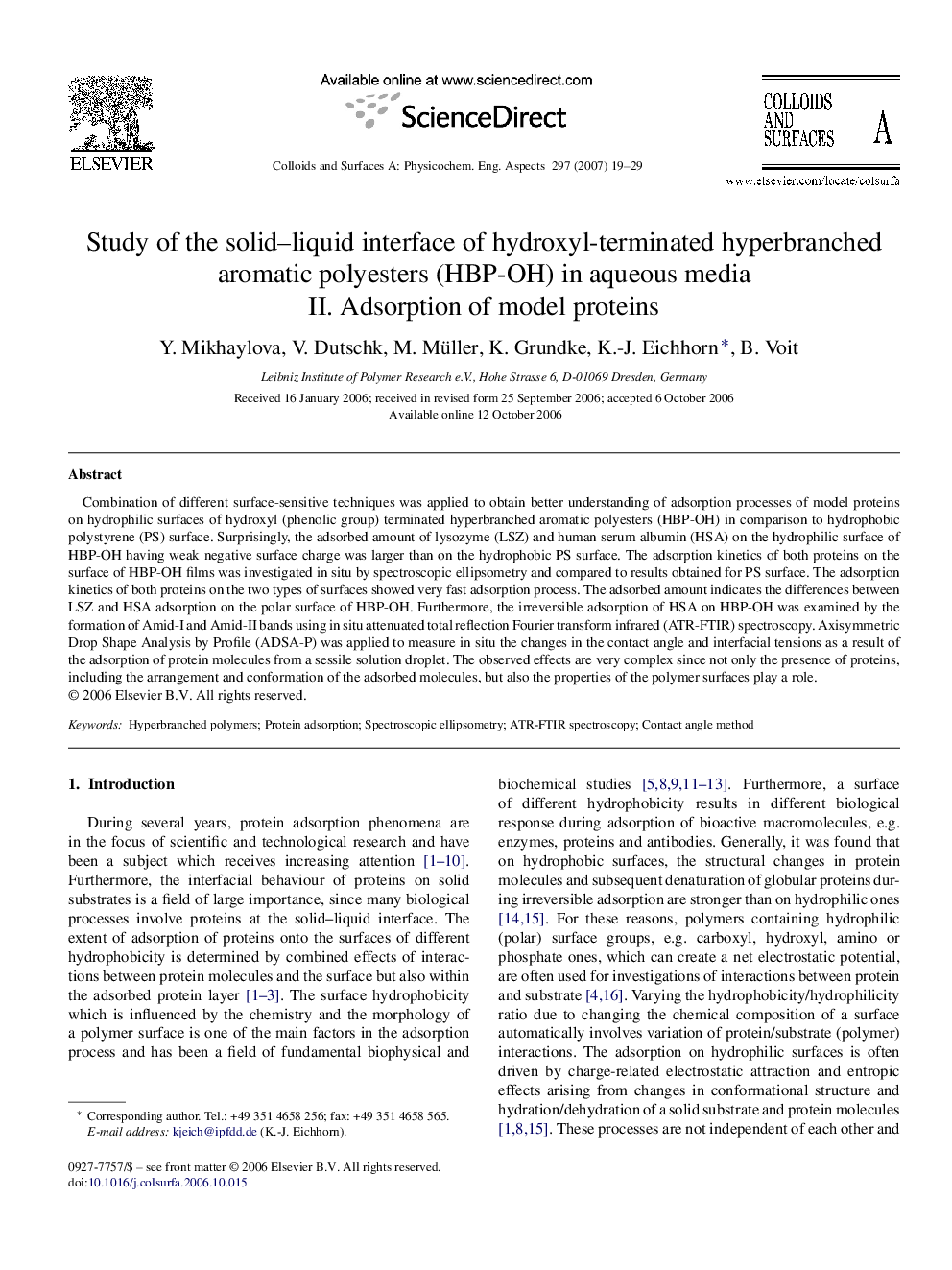| Article ID | Journal | Published Year | Pages | File Type |
|---|---|---|---|---|
| 597940 | Colloids and Surfaces A: Physicochemical and Engineering Aspects | 2007 | 11 Pages |
Combination of different surface-sensitive techniques was applied to obtain better understanding of adsorption processes of model proteins on hydrophilic surfaces of hydroxyl (phenolic group) terminated hyperbranched aromatic polyesters (HBP-OH) in comparison to hydrophobic polystyrene (PS) surface. Surprisingly, the adsorbed amount of lysozyme (LSZ) and human serum albumin (HSA) on the hydrophilic surface of HBP-OH having weak negative surface charge was larger than on the hydrophobic PS surface. The adsorption kinetics of both proteins on the surface of HBP-OH films was investigated in situ by spectroscopic ellipsometry and compared to results obtained for PS surface. The adsorption kinetics of both proteins on the two types of surfaces showed very fast adsorption process. The adsorbed amount indicates the differences between LSZ and HSA adsorption on the polar surface of HBP-OH. Furthermore, the irreversible adsorption of HSA on HBP-OH was examined by the formation of Amid-I and Amid-II bands using in situ attenuated total reflection Fourier transform infrared (ATR-FTIR) spectroscopy. Axisymmetric Drop Shape Analysis by Profile (ADSA-P) was applied to measure in situ the changes in the contact angle and interfacial tensions as a result of the adsorption of protein molecules from a sessile solution droplet. The observed effects are very complex since not only the presence of proteins, including the arrangement and conformation of the adsorbed molecules, but also the properties of the polymer surfaces play a role.
